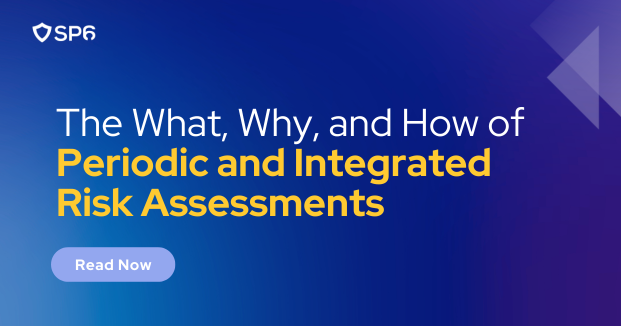While gap, readiness, and business-process-mapping assessments are crucial in preparing organizations for CMMC compliance, another type of assessment — the risk assessment — is critical to a holistic security strategy.
What is a Risk Assessment?
Risk assessments help organizations identify, analyze, and prioritize risks to their operations, business objectives, and CUI. They evaluate vulnerabilities within information systems and the potential impact of threats exploiting these vulnerabilities.
The risk-assessment process has four main components:
- Identification of Critical Assets and Threats: The first step of a risk assessment is to understand what needs to be protected. For Defense-Industrial-Base (DIB) organizations, this includes CUI and other sensitive information. Identifying potential threats to these assets is equally important.
- Identification of Vulnerabilities: This involves assessing the weaknesses within systems, processes, or security controls that threats could exploit.
- Risk Analysis and Prioritization: Risk analysis involves evaluating the likelihood of a threat exploiting a vulnerability and its potential impact on the organization. This helps prioritize risks based on their severity.
- Mitigation Strategies: This step develops strategies to mitigate identified risks, whether through technological solutions, process changes, or other security measures.
The Value of Risk Assessments in the DIB Sector
For organizations within the DIB, conducting regular risk assessments isn’t just about CMMC compliance; it’s about ensuring operational resilience and safeguarding national security interests. Here are key reasons why risk assessments are indispensable:
- They’re a requirement!
- They identify potential risks early and allow organizations to implement preventive measures before any compromise of CUI.
- They enable organizations to allocate their resources more effectively by prioritizing risks and focusing on the most critical vulnerabilities.
- They provide actionable insights that guide decision making regarding security investments and policies.
Tips for Conducting a Risk Assessment
Incorporating risk assessments into a security strategy requires commitment and expertise. Organizations should consider the following steps to conduct risk assessments effectively:
- Conduct periodic risk assessments, either annually or ad hoc, but do them at regular intervals or in response to significant organizational or threat landscape changes.
- Engage stakeholders from across the organization to comprehensively understand assets, risks, and security measures.
- Leverage expertise from cyber-risk-and-compliance-management professionals who understand the nuances of the DIB sector, DFARS and CMMC requirements, and risk management.
- Implement processes for continuously monitoring threats and vulnerabilities, adjusting risk management strategies as needed.
As your organization navigates the fun world of security assessments and operational security within the DIB, remember that assessments are tools, not just obligations.
Gap, readiness, and business-process-mapping assessments are crucial, but risk assessments elevate your strategy by providing a comprehensive view of your security posture. They ensure that your organization meets compliance requirements and proactively protects against changing security standards, regulatory requirements, and cyber threats. By taking this proactive approach, you’ll set a new standard of confidence in your organization and become set apart within the Defense Industrial Base.
Get Risk-Assessment Help with SP6
At SP6, our Certified CMMC Professionals (CCPs) and Certified CMMC Assessors (CCAs) have 15+ years of experience empowering companies to achieve compliance. Start a conversation with us today to discover how we can help with all of your assessment needs.


